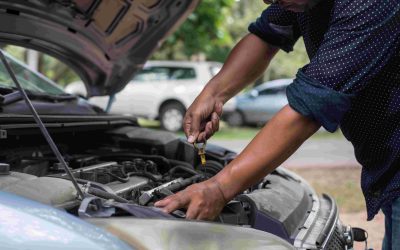Driving in the Rain: Best Safety Tips for Kenyan Roads | Train Defensive Driving

Introduction: Why Rain Changes Everything
Driving in the rain on Kenyan roads from Nairobi’s busy highways to the rural routes presents a whole new challenge. Wet roads, reduced visibility, and impatient drivers can quickly turn a simple commute into a dangerous journey. To stay safe, every driver needs to understand how rain affects vehicle control, braking, and visibility and why mastering defensive driving techniques is essential during the rainy season.
According to Kenya’s NTSA (National Transport and Safety Authority), accidents spike during the rainy season due to slippery roads, poor visibility, and speed.
But with the right preparation and proper training in defensive driving at Sensei Driving School — you can navigate wet conditions safely and confidently.
1. Slow Down and Keep Your Distance
Rain reduces tire traction, making it easier to lose control.
- Drive 10–20 km/h slower than usual.
- Maintain at least 5 seconds of following distance between you and the vehicle ahead.
- Avoid sudden braking or sharp turns.
Pro Tip: Use your car’s cruise control cautiously — avoid it entirely on wet or flooded roads.
2. Turn On Your Headlights — But Not High Beams
Visibility is key during rainfall.
- Switch on low-beam headlights even during daylight; it helps other drivers see you.
- Avoid high beams — they reflect off rain and fog, reducing your visibility.
Bonus: Clean your headlights and windshield regularly to prevent grime buildup that worsens glare.
3. Check Your Tires Before You Drive
Your tires are your only contact with the road — they determine grip and control.
- Ensure tire tread depth is at least 3 mm.
- Check tire pressure weekly.
- Replace worn-out tires immediately.
Warning: Bald tires can triple braking distance on wet roads — a common cause of skidding accidents in Kenya.
4. Avoid Flooded Roads
Kenyan rainy seasons (March–May, October–December) often bring flash floods, especially in low-lying roads.
- Never drive through moving water deeper than your wheel rims.
- If unsure about depth, turn around — don’t risk it.
- Water can hide potholes or wash away the road surface entirely.
Remember: Even 15 cm (6 inches) of moving water can sweep away small cars.
5. Use Defensive Driving Techniques
Defensive driving means anticipating hazards before they happen — and adjusting early.
At Sensei Driving School, you can train in:
- Hazard perception: spotting risks early in rain, fog, or traffic.
- Skid recovery: how to safely steer and brake during a slide.
- Safe overtaking and lane discipline in limited visibility.
- Emergency braking and hydroplaning control.
Enroll in our Defensive Driving Program today to master these life-saving techniques and qualify for a recognized NTSA-endorsed certificate.
Learn more: Sensei Driving School — Trusted across Kenya for professional driving and road safety training.
6. Beware of Hydroplaning
Hydroplaning occurs when tires lose contact with the road due to a thin layer of water — causing loss of control.
If it happens:
- Don’t brake suddenly.
- Ease off the accelerator gently.
- Steer straight until tires regain grip.
Pro Tip: Keep speeds below 80 km/h in heavy rain to avoid hydroplaning.
7. Maintain Clear Windows and Mirrors
Fogging can make it almost impossible to see in humid conditions.
- Use your defroster or AC to clear the windshield.
- Keep a microfiber cloth handy to wipe fog manually.
- Apply an anti-fog solution inside windows if possible.
8. Keep Both Hands on the Wheel
During the rain, steering control is critical.
- Hold the wheel firmly with both hands (9 and 3 o’clock position).
- Avoid distractions — don’t use your phone or adjust the radio while moving.
- If you feel unsafe, pull over to a safe, well-lit area and wait out heavy rain.
9. Keep Your Car Maintained
A well-maintained car performs better under pressure.
Before the rainy season:
- Replace worn-out wipers.
- Test brakes, lights, and defrosters.
- Refill windshield washer fluid.
At Sensei’s mechanical workshop, we often see accidents that could have been prevented by simple maintenance checks before the rain.
10. Stay Calm — Never Panic
Driving in the rain can be stressful, especially for new drivers.
If your car starts to skid:
- Ease off the gas.
- Steer gently in the direction you want to go.
- Avoid overcorrecting or braking suddenly.
Confidence comes from training and practice — and that’s what you’ll get at Sensei Driving School’s Defensive Driving Program.
Why Train Defensive Driving at Sensei Driving School?
Sensei Driving School is a NTSA-accredited training institution focused on producing safe, competent, and confident drivers for Kenya’s modern roads.
Our Defensive Driving Course Covers:
- Rainy & slippery condition management
- Vehicle control in emergencies
- Speed management and stopping distances
- Risk awareness and hazard response
- Fuel-efficient driving techniques
Locations: Kitengela and Nakuru
Driving smart saves fuel. Driving safe saves lives.
Final Takeaway
Driving in the rain doesn’t have to be dangerous — it just demands awareness, control, and preparation.
- Slow down.
- Keep distance.
- Stay alert.
- Train defensively.
When the weather turns, your best defense is knowledge and skill — both of which you’ll gain as you learn how to drive in the rain






